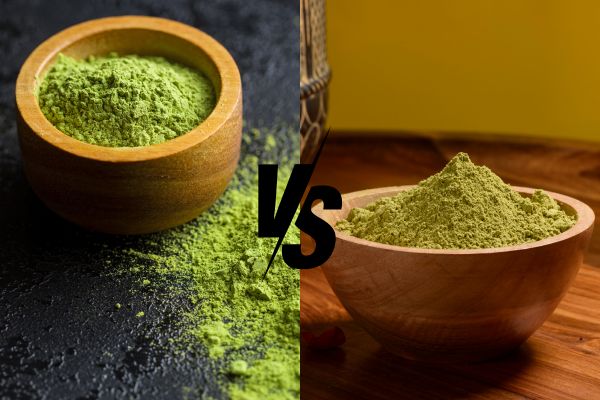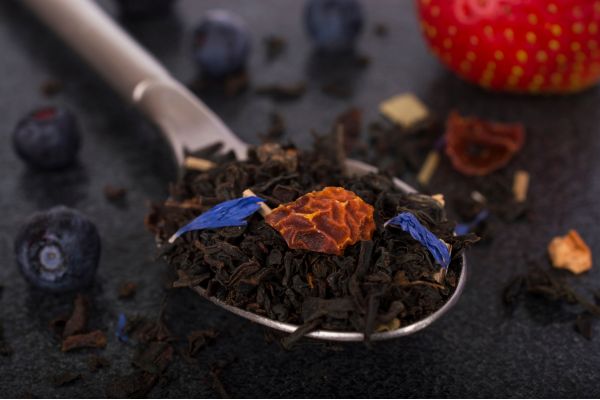Instant tea is becoming popular thanks to its convenience. In this article, let’s explore the production process of instant tea at FGC.

Contents
Introduction
It is easy to come across a stick of instant tea in office settings or with travelers. Today, instant tea is available in various types and flavors, providing diversified options for consumers. How is instant tea made? Raw materials like tea leaves, additives, and flavors undergo many steps to become the final tea powder.
Overview of instant tea
Instant tea is a type of tea that can be in granules or powder form, making it dissolve easily in water. Quick preparation with tasty flavors makes it an ideal option for today’s hectic lifestyle. Besides, it is convenient to travel in the powder form, eliminating the need for filters, tea bags, or leaves. Compared to freshly brewed tea, instant tea lasts longer because it is processed and dehydrated.
Instant tea is mostly used to make hot or cold tea quickly. Dissolved with water and added ice, the drink is perfect to quench thirst during hot summer days. Besides, it can also be used in other recipes for a tea flavor infusion. Currently, there is a wide variety of instant tea, including black, green, herbal, and flavored instant tea. Because of the increasing demand, instant tea is constantly improved with many new flavors and functions.

Production process of instant tea’s semi-finished products
Raw materials: tea, flavors, additives
The main ingredients to produce instant tea are fresh buds or semi-finished green and black tea. In addition, additives such as sugar, fruit, and flower flavors are included. All ingredients are needed to ensure quality and safety. Fresh tea leaves need to undergo the process of enzyme destruction, rolling, withering, fermentation, extraction, concentration, and drying. After the concentration, the liquid is dried using spray drying to turn liquid into powder form.
Fresh tea is usually more difficult to preserve and has a shorter shelf life; therefore, semi-finished tea in concentrate form is usually used to produce instant tea. When receiving raw materials, workers must check carefully according to standards to ensure consistent quality in each batch.
Drying sugar
After being weighed, sugar is sent to the drying system to process and get the semi-finished dried sugar. The most popular technique for drying sugar is using rotary drums since they can work well with a wide range of sugars and conditions. With rotary drums, sugar is mixed and dried evenly, and less sugar sticks to the machines.
Drying sugar aims to bring it to the final moisture content of 0.03 to 0.05% without changing its quality during storage. Because sugar crystals do not absorb water, the drying process is not too challenging. It mainly separates moisture on their surface. The air velocity remains from 0.6 to 0.8 m/s. Drying processes occur continuously in the opposite direction.
In addition, the temperature while drying is about 70 to 90°C. Using too high a temperature, such as over 100°C, might cause the sugar to turn yellow. After drying, let the semi-finished sugar cool to room temperature to avoid water vapor condensation in the packaged product. Then, manufacturers will package and store it in the warehouse for further usage.

Grinding ingredients
Dried sugar is sent to the sugar mill and ground to the desired fineness. Then, fine sugar is passed through a vibrating screen to screen out large sugar particles that do not meet the requirements. Meanwhile, additives and flavors are also milled by separate additive mills. The temperatures during mixing are always kept below 25°C. Sugar must be ground so that the ingredients can be mixed evenly and smoothly. If the sugar is left whole, the difference in density of the ingredients will be too great, causing the sugar to concentrate on the bottom.
Blending semi-finished products
After achieving the standard fineness, tea, additives, and flavors, are weighted according to the formula and put into the mixer. The mixer rotates at high speed to evenly mix all the ingredients. This ensures consistency among the final products. After mixing, semi-finished products are quality-checked, packaged, and preserved for further processes.
Instant tea packaging process
Feed semi-products into machines
Semi-finished products are rechecked before feeding into machines through hoppers. There are numerous flavors of instant tea, so make sure to feed the correct flavors and types. Make sure that the ingredients of different flavors do not mix. After packaging one flavor, the machine system is cleaned completely. Before starting to produce a new flavor, it must be ensured that no trace of the previous flavor is left in the machinery.
Packaging
Raw materials are fed into the top hopper. The hopper drops the raw materials down to the quantitative unit. After that, the screw quantifies tea powder by the number of screw rotations, and the materials are fed into the feeding tube. The machine automatically forms bags from film rolls, puts tea powder into the packaging, and finally cuts the individual bags to make finished products. All steps are precisely calculated by the machine and performed automatically, saving the labor force.
Raw materials are packaged according to the specifications of each type. Then, they are checked for weight, appearance, and tightness to ensure they meet standards. Currently, FGC has three types of packaging for instant tea.
400-gram tin bags
Semi-finished products are packaged in 400-gram tin bags. The production and expiration dates are printed on the outside of the bag. All information is also printed directly on the bags. This kind of packaging is ideal for bulk users, such as tea shops and those who frequently use large amounts of instant tea in a short time. One of their advantages is cost-effectiveness. However, their shelf life may be shorter due to increased exposure to the surrounding environment. Tea tin bags are then packed in cartons and moved to storage. This type of bag uses a zipper to protect the inside products.

12-sachet packages
The processed materials are packed in 25gr heat-seal sachets and connected to form a package of 12 items. The sachet materials will protect the quality, aroma, and flavor of the products from exposure to the environment. The production and expiration dates are printed on the heat-seal sachets. It is also a more cost-effective packaging, with all information and images printed directly on each sachet. These 12-sachet packages are then put in cartons for easier storage and transportation.

Stick packages
The third method of packaging is to pack in heat-seal sticks. The weight of each stick is 15 grams. Each 18 sticks is then packed in a single kraft paper box. To increase preservation capacity, the paper boxes are wrapped with shrink film before putting them into cartons. These sticks are suitable for personal use and easier to bring along anywhere.

Storing
Each carton is weighed to ensure the correct quantity. After that, the finished products are stacked on pallets according to types and stored in regulated warehouses before being brought onto the market.
About Future Generation Co.,Ltd
Future Generation Company Limited is one of the largest beverage suppliers in Vietnam, with 27 years of experience in production and export. FGC is equipped with modern machines such as Hotfill PET and TetraPak, ensuring high-capacity production. FGC strives to achieve our mission to become Vietnam’s leading healthy beverage company. Our factories also meet international standards such as ISO, HACCP, etc. In addition, we constantly innovate our machinery system, strengthen production capacity, and increase productivity.
FGC also provides Private Label Services. With this service, we can help customers in researching and formulating beverages, designing product label packaging, and creating their own brands. This is an ideal solution for small and medium enterprises. Moreover, FGC provides free samples for customers to test before bulk orders. We also ensure delivery as fast as possible.
Contact
Address: R4 building, Office Quarter 02, Royal City, 72A Nguyen Trai St., Thanh Xuan Dist., Hanoi.
Phone: +84 24 73 000 125/ +84 24 73 063 369
Mail: info@vietnam-tea.com
Website: https://oem-fgc.com/
Facebook: https://www.facebook.com/fgcvietnamtea










